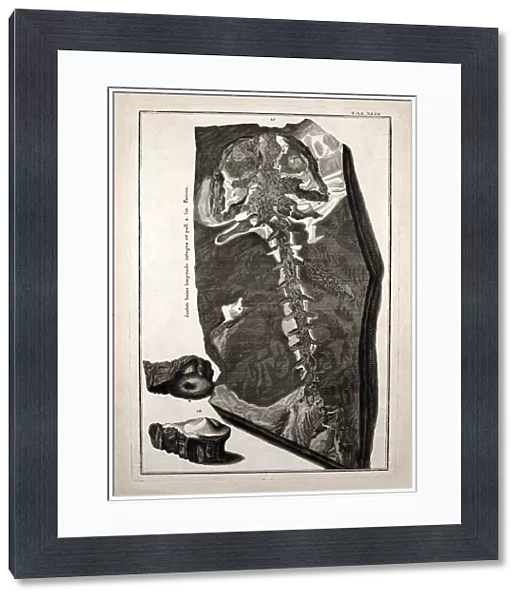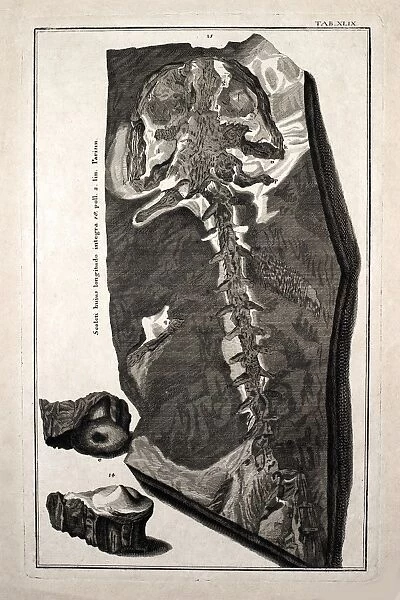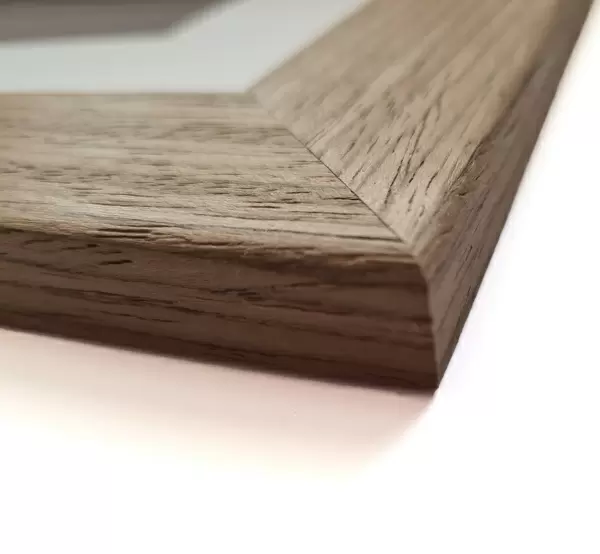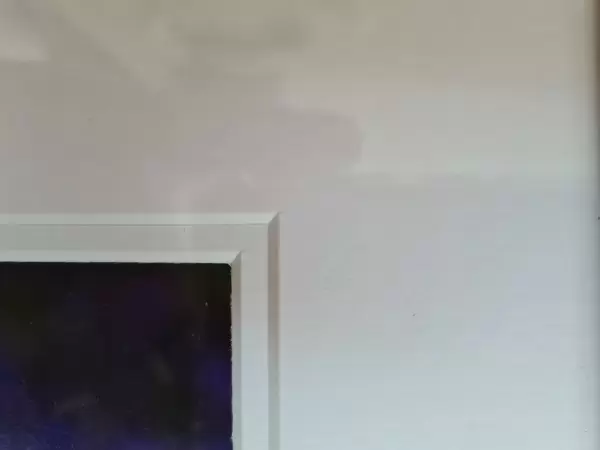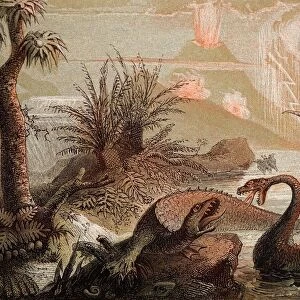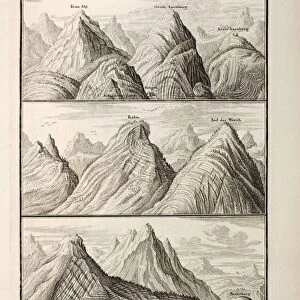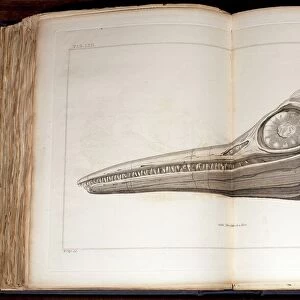Premium Framed Print : 1726 Scheuchzer Homo diluvii testis
![]()

Framed Photos from Science Photo Library
1726 Scheuchzer Homo diluvii testis
Homo diluvii testis (evidence of a diluvian human or witness of the flood) from the work of Johann Jakob Scheuchzer (August 2nd 1672 - June 23rd 1733). Folio size copperplate from Physica Sacra (1731) and first described by him in 1726 L Homme temoin du deluge. Scheuchzer beleived this a human victim of the flood. He included the couplet from a deacon " afflicted skeleton of old, doomed to damnation, soften, thou stone, the heart of a wicked generation!". It was identified as a giant Salamander by Cuvier in 1811 (see other image in this collection). The current genus name Andrias was coined in 1837. Hence the current scientific name Andrias (image of man) scheuchzeri. There is a living member of the genus A. davidianus, the Japanese giant salamander. To the left here are fossil vertebrae which Scheuchzer believed were also human. Cuvier showed they were crocodilian
Science Photo Library features Science and Medical images including photos and illustrations
Media ID 6317321
© This image is Paul D. Stewart 2009. Do not reproduce without permission of the photographer at Stewartpauld@aol.com
Black And White Creationism Creationist Cuvier Human Fossil Paleontologist Physica Sacra Giant Salamander Mono Chrome Palaeontology Scheuchzer The Flood
23"x19" (58x48cm) Premium Frame
FSC real wood frame with double mounted 16x12 print. Double mounted with white conservation mountboard. Frame moulding comprises stained composite natural wood veneers (Finger Jointed Pine) 39mm wide by 21mm thick. Archival quality Fujifilm CA photo paper mounted onto 1mm card. Overall outside dimensions are 23x19 inches (584x482mm). Rear features Framing tape to cover staples, 50mm Hanger plate, cork bumpers. Glazed with durable thick 2mm Acrylic to provide a virtually unbreakable glass-like finish. Acrylic Glass is far safer, more flexible and much lighter than typical mineral glass. Moreover, its higher translucency makes it a perfect carrier for photo prints. Acrylic allows a little more light to penetrate the surface than conventional glass and absorbs UV rays so that the image and the picture quality doesn't suffer under direct sunlight even after many years. Easily cleaned with a damp cloth. Please note that, to prevent the paper falling through the mount window and to prevent cropping of the original artwork, the visible print may be slightly smaller to allow the paper to be securely attached to the mount without any white edging showing and to match the aspect ratio of the original artwork.
FSC Real Wood Frame and Double Mounted with White Conservation Mountboard - Professionally Made and Ready to Hang
Estimated Image Size (if not cropped) is 26.4cm x 39.6cm (10.4" x 15.6")
Estimated Product Size is 48.2cm x 58.4cm (19" x 23")
These are individually made so all sizes are approximate
Artwork printed orientated as per the preview above, with portrait (vertical) orientation to match the source image.
EDITORS COMMENTS
This print showcases the 1726 Scheuchzer Homo diluvii testis, a remarkable piece of evidence from Johann Jakob Scheuchzer's renowned work. Measuring folio size, this copperplate print is taken from Physica Sacra (1731) and was first described by Scheuchzer himself in his book L'Homme temoin du deluge. Scheuchzer firmly believed that this skeletal figure represented a human victim of the biblical flood. Accompanying the image is a poignant couplet written by a deacon, pleading for compassion towards this afflicted skeleton and urging an awakening of hearts within a wicked generation. However, in 1811, Cuvier identified this intriguing specimen as none other than a giant Salamander. This misidentification led to its current scientific name Andrias scheuchzeri, with "scheuchzeri" paying homage to its discoverer. To the left of the main subject are fossil vertebrae which Scheuchzer also believed were human remains. However, Cuvier scientifically demonstrated that they actually belonged to crocodilians. This mesmerizing illustration not only sheds light on early paleontological studies but also highlights the intersection between science and biblical history. It serves as a reminder of how our understanding evolves over time through meticulous research and analysis. Paul D. Stewart's masterful rendering captures both the artistic beauty and scientific significance of this historical artifact.
MADE IN THE UK
Safe Shipping with 30 Day Money Back Guarantee
FREE PERSONALISATION*
We are proud to offer a range of customisation features including Personalised Captions, Color Filters and Picture Zoom Tools
SECURE PAYMENTS
We happily accept a wide range of payment options so you can pay for the things you need in the way that is most convenient for you
* Options may vary by product and licensing agreement. Zoomed Pictures can be adjusted in the Basket.

